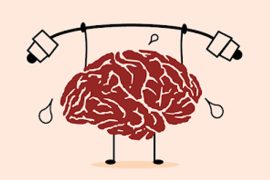The pivotal role of regular exercise in promoting long-term physical health, particularly for women. Engaging in at least 150 minutes of physical activity per week, especially by age 55, significantly enhances physical health scores later in life compared to less active peers. The study suggests that starting or intensifying physical activity in midlife, even if less active earlier, can “make up” for previous inactivity, benefiting physical health-related quality of life into one’s 70s.
This finding supports public health initiatives advocating for midlife lifestyle changes, such as increased exercise, to improve overall well-being and potentially reverse health impacts associated with sedentary lifestyles. Starting exercise by age 55 shows notable benefits, although initiating earlier in life establishes enduring habits that further enhance health outcomes. Therefore, promoting regular physical activity in midlife remains critical for optimizing health and quality of life in later years.
Exercises for women aiming to meet the 150-minute weekly activity guideline, along with health considerations:
- Moderate-Intensity Aerobic Activities: Dr. Vinutha recommends activities like brisk walking, cycling on flat terrain, water aerobics, and doubles tennis. These exercises should allow you to talk but not sing during the activity.
- Muscle-Strengthening Exercises: Include weightlifting, resistance band exercises, or body-weight exercises such as squats and push-ups. Aim for at least two days a week focusing on major muscle groups.
Health Conditions and Risk Factors to Consider:
- Cardiovascular Conditions: Women with heart disease or high blood pressure should consult healthcare providers for tailored exercise programs.
- Joint Issues or Osteoporosis: Focus on low-impact activities like swimming or cycling to avoid joint stress while strengthening bones and muscles.
- Diabetes: Regular exercise can help manage blood sugar levels, but monitoring closely and adjusting medication as needed is crucial.
- Chronic Pain: Conditions like chronic back pain or fibromyalgia require a careful approach to avoid exacerbating pain while still benefiting from physical activity.
Balancing these exercises and considering individual health conditions ensures safe and effective physical activity to promote overall health and well-being.
Disclaimer:
The information contained in this article is for educational and informational purposes only and is not intended as a health advice. We would ask you to consult a qualified professional or medical expert to gain additional knowledge before you choose to consume any product or perform any exercise.







